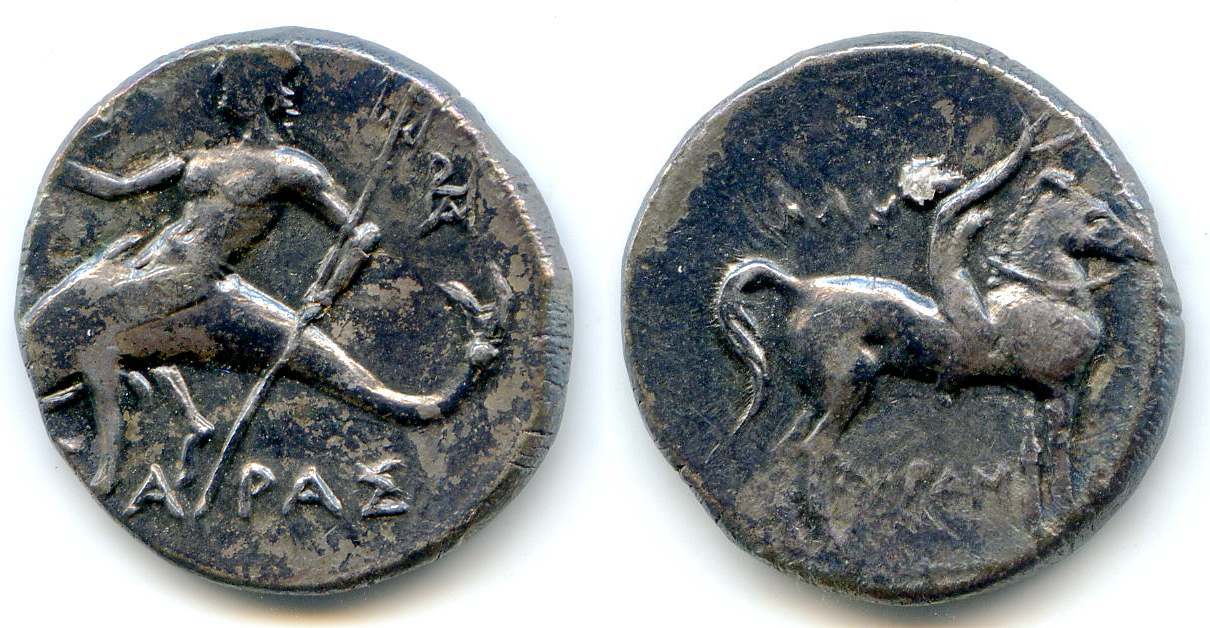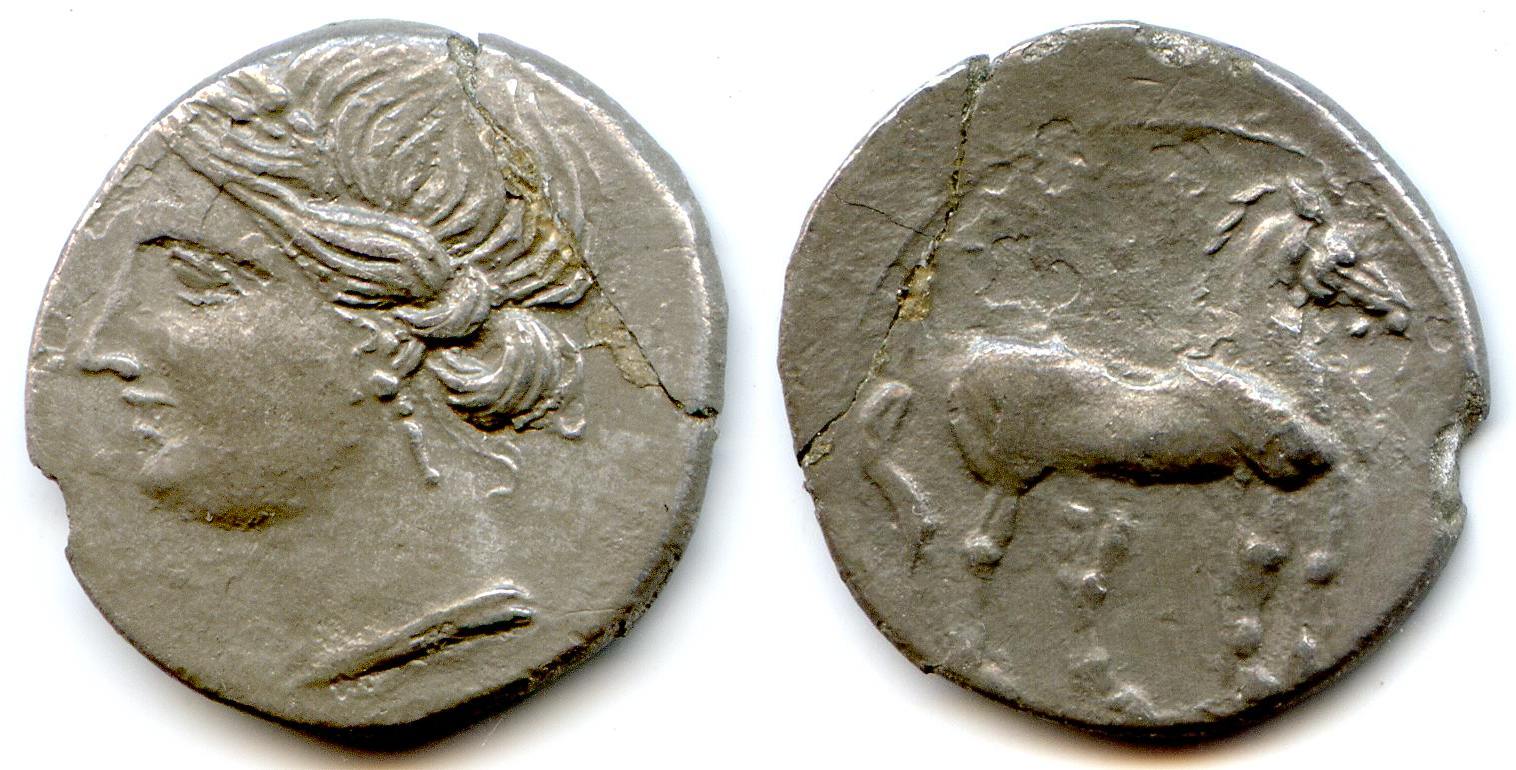Hannibal
Carthaginian general and statesman, b. 247 BC, d. 182 BC

Tarentum, Southern Italy
Silver Drachm, 18 mm, 3.67 grams.
Struck during the occupation of Tarentum by Hannibal, 212 - 209 BC
This coin represents the traditional type of Tarentum, first issued in the
middle of the fifth century BC, but discontinued in 228 BC under Roman
domination. During his occupation of Tarentum, Hannibal installed his own
magistrates. Tarentum once again issued these coins of the traditional
Greek designs, but based on a considerably lighter Carthaginian weight
standard.

Bruttium, Southern Italy
Silver 1/4 Shekel, 15 mm, 1.70 grams.
Struck during the occupation of Southern Italy by Hannibal, circa 215 - 205 BC
This coin demonstrates more traditionally Punic coin-types, with the obverse
showing the head of Tanit and a horse on the reverse. Note that this coin has
been broken and repaired. Under certain circumstances over a long period of
time, silver may crystallize and become brittle. A crystallized silver coin may
shatter like glass if dropped.
The son of Hamilcar Barca, Hannibal sought to restore the power of Carthage and to fight increasing Roman expansion. Hannibal combined a mastery of military strategy and tactics with inspirational leadership. Given greater resources, he could have halted the growth of Roman power.
In 219 BC, Hannibal deliberately provoked Rome by capturing Saguntum in Spain, precipitating the Second Punic War (218-201 BC). He planned to win the war by a surprise invasion of Italy from the north. Although impeded by early snows and the presence of cumbersome elephants in his train, he crossed the Alps. Once in Italy he inflicted several major defeats on the Romans, including the Battle of Cannae (216 BC), the worst Roman defeat ever. However, Hannibal was fighting far from home, lacking the power to take Rome, and without the possibility of regular supplies or reinforcements. Though Hannibal remained in Italy, the delaying tactics of Q. Fabius Maximus Cuncator prevented Hannibal from dealing a mortal blow.
Hannibal finally returned to the Carthaginian homeland of North Africa in 203 BC after it was invaded by Scipio Africanus Major. Hannibal lacked cavalry and was defeated at Zama in 202. He arranged peace terms with Rome.
About 196 BC, Hannibal became shophet, or chief magistrate, of Carthage. He introduced important constitutional and economic reforms to undercut the dominant nobles and restore prosperity. His rivals, charging him with anti-Roman activity, requested Roman intervention. Hannibal fled to Syria then to Crete and then to Bithynia, committing suicide in 182 to avoid being surrendered to Rome.